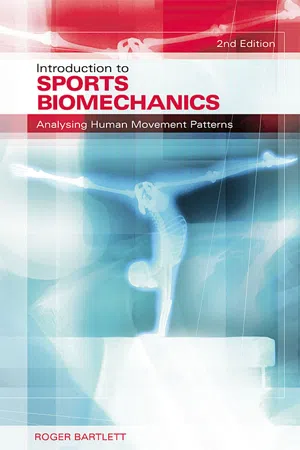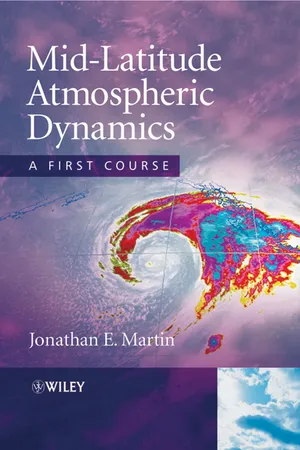Physics
External Forces
External forces in physics refer to the influences acting on an object from outside its immediate surroundings. These forces can include gravitational forces, electromagnetic forces, and contact forces from other objects. Understanding external forces is crucial for analyzing the motion and behavior of objects in the physical world.
Written by Perlego with AI-assistance
Related key terms
Related key terms
1 of 4
Related key terms
1 of 3
9 Key excerpts on "External Forces"
- eBook - ePub
Engineering Principles for Electrical Technicians
The Commonwealth and International Library: Electrical Engineering Division
- K. M. Smith, P. Holroyd, N. Hiller(Authors)
- 2013(Publication Date)
- Pergamon(Publisher)
CHAPTER 1Forces and Equilibrium
Publisher Summary
When we think of forces we usually consider the action of lifting a weight, bending a piece of wire or setting a vehicle in motion. Whenever we move, or move other objects around us, then forces are brought into play. One of the most important forces is the one that causes objects to fall downwards, the Force of Gravity. This chapter discusses the types of force, effects of forces, and the equilibrium of forces. The effect of a number of forces acting on a body depends not only on the magnitude of the forces and their directions, but also on the points at which the forces are applied to the body. This action of the force turning about an axis or fulcrum is called the turning moment or moment of the force, or torque. The chapter also presents the experiment to find the coefficient of friction between two surfaces in contact.1.1 Types of force
When we think of forces we usually consider the action of lifting a weight, bending a piece of wire or setting a vehicle in motion. Whenever we move, or move other objects around us, then forces are brought into play. In fact, approximately three centuries ago Sir Isaac Newton gave us a definition of a force which includes all the forces that we can imagine. “Force changes or tends to change the state of a body’s rest or uniform motion in a straight line.” One of the most important forces we meet is the one which causes objects to fall downwards, the Force of Gravity .It has been found that between all bodies there is a force of attraction defined as the gravitational force. The larger the bodies the greater the attraction between them, but as the distance between the bodies increases the attraction decreases. Normally bodies on the surface of the earth do not show this attraction between themselves because the force is very small, but if we consider two masses, one of which is the earth, then the force of attraction between these masses can be considerable. The earth being the larger body will not move perceptibly and therefore the smaller body, if free to do so, will move towards the centre of the earth. This force of gravity acting on the body is called its Weight - eBook - ePub
Basic Engineering Mechanics Explained, Volume 1
Principles and Static Forces
- Gregory Pastoll, Gregory Pastoll(Authors)
- 2019(Publication Date)
- Gregory Pastoll(Publisher)
Chapter 4 Forces• The nature and origins of forces• Mass, weight and gravitation• Scalars and vectors• Vector addition of forces: resultants and equilibrants• Components of a force: general and rectangular components• Determining a resultant by summation of rectangular components• The principle of transmissibility of a force• Equilibrium conditions for a particle in 2-DThe nature and origins of forces What is a force?It is difficult to define a force, because forces are not visible. You can only see or feel their effect. When a crane lifts a heavy container into the air, you understand that it must be exerting a force in order to overcome the gravitational force that the earth exerts on the container. However, you can’t see the force itself.The different effects that forces can have Forces acting on solid objects can have any combination of the following visible effects: They can resist other forces; move an object; rotate an object; or deform an object. If any one of these effects is observed, one can deduce that a force must be acting.It is impossible for any agent, human or otherwise, to just ‘exert’ a force, without having something to exert it on. Just try, for example, to push your arms sideways with a force of 200 N when there is nothing to push against. It is impossible. You may have the capability of exerting that amount of force, but unless there is some resistance there to oppose your effort, the actual force you are exerting is limited to that needed to push the air out of the way of your arms. So, a force cannot exist on its own, without pushing or pulling against some resistance.This fact is so important that it gives rise to what this author calls The zeroth law of mechanics : a force cannot even exist unless it is opposed - eBook - ePub
- Chris Webster(Author)
- 2012(Publication Date)
- Routledge(Publisher)
toward the earth. If these forces are in balance, a stable orbit is achieved.At even higher speeds the cannonball will escape the earth’s gravitational pull and will not fall back to earth nor be held in orbit around the earth; instead it will continue on its way and move away from the earth into space. It will continue in this manner until it encounters another object or the gravitational forces of another object, which will either stop it or deflect it.Newtononian Laws of Motion
It is mostly very evident to the observer that animals and other animate beings have the ability to exert forces from within to create a whole range of movements that they have, for the most part, complete control over. They swim, they run, they jump, and they eat. There are many other things that we see around us that move, some of them in very dynamic ways that require External Forces to create this dynamic motion: air pressure and wind create the waves on the ocean, tidal forces are responsible for moving vast quantities of material around, the flowing water in rivers is due to geographical and geological conditions—even the movement of clouds, the blowing of leaves on the trees, and the violent eruptions of volcanoes all are determined by a variety of External Forces.These laws describe the relationship between the forces acting on a body and the motion of that body. They are physical laws that form the basis for classical mechanics and are used to describe the motion of larger objects, whereas the motion of subatomic objects and material is described in terms of quantum mechanics. The laws that underpin classical mechanics are capable of producing highly accurate and predictable results; it is on this predictability that our engineering and technology are built and that provides us with a basis for our analysis of movement. - eBook - ePub
Instant Notes in Sport and Exercise Biomechanics
Second Edition
- Paul Grimshaw, Michael Cole, Adrian Burden, Neil Fowler(Authors)
- 2019(Publication Date)
- Garland Science(Publisher)
Forces can be divided into either attractive or contact forces. An example of an attractive force is gravitational force, which exists between any two objects that have mass. Examples of contact forces would be the contact of the foot with a soccer ball or with the ground while running. All forces produce or alter motion, although this motion (i.e. acceleration/deceleration) will not always be apparent. A book cannot be pushed across a table unless you apply enough force to overcome the inertia of the book and frictional force between the book and the table. External and internal forces Forces can also be both external and internal. An external force would be the force on the tennis ball that is exerted by the racket, whereas an internal force would be the forces occurring in the elbow joint when you hit the ball with the racket. Force and inertia An application of force is required to cause a change in movement of an object (i.e. an acceleration or deceleration). Inertia is the reluctance of an object to change its state of motion. Inertia is directly related to mass. The more mass an object has the more inertia it has. If you push a “massive” book across a table it will take more force to accelerate the book at a rapid rate than it would to accelerate a “less massive” book at the same rate. Mass and weight Mass is the measure of the number of atoms or molecules in an object. Mass is relatively constant over time. If you have a mass of 75 kg on the planet Earth, you will have a mass of 75 kg wherever you are. Weight is the measure of force acting on an object. It is dependent on the position of the object on the planet and also on which planet the object is located. An object on Earth will weigh more than the same object when it is located on the Moon. Vector quantities Vector quantities have both magnitude and direction. A force can be expressed as a vector quantity. This can be either mathematically expressed or graphically represented on paper by a line drawn to scale. The length of the line would be the magnitude of the force and the position/angle/orientation of the line would be its direction. - eBook - ePub
Introduction to Sports Biomechanics
Analysing Human Movement Patterns
- Roger Bartlett(Author)
- 2007(Publication Date)
- Routledge(Publisher)
Figure 5.1 .The effects of a force are not altered by moving it along its line of action. Its effects on rotation – though not on linear motion – are changed if the force is moved parallel to the original direction and away from its line of action. A torque, also known as aFigure 5.1 Directional quality of force.moment of force or a turning effect, is then introduced; this is an effect tending to rotate the object (see below). A quantitative analyst should exercise care when solving systems of forces graphically and would usually adopt a vector approach (see Appendix 4.1 ).The SI unit of force is the newton (N) and the symbol for a force vector is F . One newton is the force that when applied to a mass of one kilogram (1 kg), causes that mass to accelerate at 1 m/s2 in the direction of the force application. A sports performer experiences forces both internal to and external to the body. Internal forces are generated by the muscles and transmitted by tendons, bones, ligaments and cartilage; these will be considered in Chapter 6 . The main External Forces, the combined effect of which determines the overall motion of the body, are as follows.Weight
Weight is a familiar force (Figure 5.1 ) attributable to the gravitational pull of the Earth. It acts vertically downwards through the centre of gravity of an object towards the centre of the Earth. The centre of gravity (G in Figure 5.1 ) is an imaginary point at which the weight of an object can be considered to act. For the human performer, there is little difference between the positions of the centre of mass (see later) and the centre of gravity. The former is the term preferred in most modern sports biomechanics literature and will be used in the rest of this book. One reason for this preference is that the centre of gravity is a meaningless concept in weightless environments, such as space shuttles. An athlete with a mass of 50 kg has a weight (G ) of about 490 N at sea level, at which the standard value of gravitational acceleration, g , is assumed to be 9.81 m/s2 - eBook - ePub
Mid-Latitude Atmospheric Dynamics
A First Course
- Jonathan E. Martin(Author)
- 2013(Publication Date)
- Wiley(Publisher)
2Fundamental and Apparent Forces
Objectives
The fluid atmosphere is a physical object and its motion is therefore governed by the laws of physics. From among these laws, Newton’s second law states that the rate of change of momentum of an object (i.e. its acceleration) equals the sum of all the forces acting on that object:This powerful statement is valid only for motions measured in a non-accelerating coordinate system – one that is fixed in space. Such a coordinate system is known as an inertial frame of reference. The most convenient x , y , and z coordinates by which we measure motions on Earth refer to a grid based upon latitude and longitude (for the x and y coordinate directions) and elevation above sea level (for the z coordinate direction). Since the Earth rotates on its axis and revolves around the Sun, this Earth-based x , y , and z coordinate system undergoes constant acceleration. This fact is easily proven using a globe. After finding your location on the globe, consider the fact that what you view at that location as the immutable direction east is, in fact, constantly changing direction (to an observer fixed in space) as the Earth rotates on its axis. Thus our Earth-based coordinates are non-inertial (i.e. accelerating). This being the case, Newton’s second law can only be applied to the motion of objects on Earth if we correct for the acceleration of our coordinate system.The collection of forces required to adequately represent Newton’s second law on the rotating Earth can therefore be split into two broad categories. The first of these includes forces that would affect objects even in the absence of rotation, the so-called fundamental forces. The most important of these fundamental forces are (1) the pressure gradient force, (2) the gravitational force, and (3) the frictional force, all of which we will investigate in this chapter. The other group of forces that we must consider in a full treatment of Newton’s second law arises from the need to correct for the acceleration of our terrestrial coordinate system. We will refer to such forces as apparent forces. - eBook - ePub
- Jerry Marion(Author)
- 2012(Publication Date)
- Academic Press(Publisher)
3FORCE
Publisher Summary
This chapter explains the concept of force and its relation to the behavior of objects at rest and in motion. The mass of an object is important in any effort to change its state of motion. The property of an object that tends to resist any change in its state of motion is called inertia. The measure of an object’s inertia is its mass. The chapter discusses Newton’s first, second, and third law of motion. A force is any influence that can cause a change in the state of motion of an object. Mass is an intrinsic property of matter; it is a measure of the inertia possessed by an object—that is, the tendency of the object to resist changes in its state of motion. Weight is the gravitational force acting on an object, and this force depends on the location of the object. Variation causes an object to have different weights even though its mass is constant.In the preceding chapter we developed methods for describing and analyzing motion. But what causes motion? You know that if you push or pull (sufficiently hard) on a lawnmower, it can be set into motion. Or, if you apply a restraining push or pull to a bowling ball, the ball can be slowed down and brought to rest. In every such case, some force —represented by a push or pull—must be applied to an object in order to change its state of motion. In this chapter we examine the concept of force and its relation to the behavior of objects at rest and in motion.3-1 FORCE AND INERTIA
Intuitive Ideas
The intuitive notion that a force is a push or a pull is entirely consistent with the precise physical definition of this important quantity. We have other, equally correct intuitive ideas about force. For example, if you push in a certain direction on an object at rest, the object tends to move in that direction. Or, if you wish to stop a moving object, you must exert a push in the direction opposite to that of the object’s motion. That is, force has direction as well as magnitude —force is a vector quantity. We also appreciate the fact that the mass of an object is important in any effort to change its state of motion. A kick applied to a soccer ball will send the ball flying; but a kick applied to a bowling ball will result in only a slight motion of the ball (and a bruised toe). The property of an object that tends to resist any change in its state of motion is called inertia; the measure of an object’s intertia is its mass - eBook - ePub
Biomechanics of Human Motion
Applications in the Martial Arts, Second Edition
- Emeric Arus, Ph.D.(Authors)
- 2017(Publication Date)
- CRC Press(Publisher)
Figure 8.1 using the FBD.To calculate the GRF we need to know the weight and the gravity. GRF = w ⋅ g. But this calculation is good only if the total CoM is at the lower abdomen part of the body. If the athlete runs, he has contact with the ground only with one leg; then the CoM is not in the middle of the body and in this case the calculation is different from the aforementioned formula.8.3 FRICTION
The force of friction ( f ) is proportional to the force pressing two surfaces together. The force of friction always opposes any motion. There are different types of friction , such as static and kinetic , which includes the sliding and rolling frictions. An object that does not move with respect to the surface on which it rests is subjected to static friction.In martial arts, the dominant force of friction is the sliding force. This is a counterforce of a pushing action against an opponent. For example, a wrestler’s leg force pushes the opponent’s body; it is opposed by a counterforce that acts backwards of the pushing force of the wrestler, and this is the friction force.Imagine two judoka ready to grab each other’s kimono. At this time, there is much pushing involved for the action of grabbing (Kumi-kata ) of the kimono. Judoka A on the left side pulls Judoka B on the right side. Let us pretend the magnitude of the limiting friction force is 150 N. If Judoka A exerts a horizontal force of only 110 N against Judoka B, the magnitude of the friction will also be 110 N and Judoka A will not be able to move Judoka B horizontally.If Judoka A increases his pulling force to 150 N, he will still not be able to pull Judoka B; this is because the magnitude of the limiting friction force equals Judoka A’s pulling force. If Judoka A is able to pull Judoka B with a force over the limiting friction force of the opponent, for example, pulling with 160 N, then the limiting friction force will not be able to sustain the effect of the friction force. Judoka B will be moved. - eBook - ePub
The Really Useful Science Book
A Framework of Knowledge for Primary Teachers
- Steve Farrow, Amy Strachan(Authors)
- 2017(Publication Date)
- Routledge(Publisher)
KEY IDEA 4.2 ForcesForces can make things start to move, can make moving things speed up, slow down, change direction or stop, and can make things change their shape.INTRODUCTION
Some of the difficulties that children (and adults) have with understanding forces and their effects are because:• Forces themselves cannot be seen (although their effects can).• Some forces cannot be felt.• Some of the explanations of forces and their effects appear to contradict a ‘common-sense’ view of the way in which the world works – for example, why should a small object fall to the ground at the same speed as a large object, when both are released from the same height at the same time? (See below!)• We may have limited personal experience of some of the common effects of forces in everyday life – for example, we are all affected by gravity, but how many people can really say that they are conscious of the ‘pull’ of gravity – when we lose our balance, we fall over; we do not feel as if we were pulled.• Any simple ‘earthbound’ consideration of the forces acting on moving objects is complicated by the effects of gravity, friction and air resistance (see below).Key Idea 4.1 , relating to energy, has hopefully demonstrated some of the interrelationships between such concepts as energy, work and power. The present section will introduce some of the concepts that relate to forces and their effects, and will show how and where they interact with energy, work and power.CONCEPTS TO SUPPORT KEY STAGES 1 AND 2
Some definitions
Forces are interactions between objects. In everyday terms, these interactions result in pushes and pulls, and it is sometimes helpful to make a mental substitution of the words ‘push’ or ‘pull’ whenever the term ‘force’ is encountered. This will be done in the text in the early part of the present section, so that readers can decide on its usefulness (or otherwise).
Index pages curate the most relevant extracts from our library of academic textbooks. They’ve been created using an in-house natural language model (NLM), each adding context and meaning to key research topics.
Explore more topic indexes
Explore more topic indexes
1 of 6
Explore more topic indexes
1 of 4








